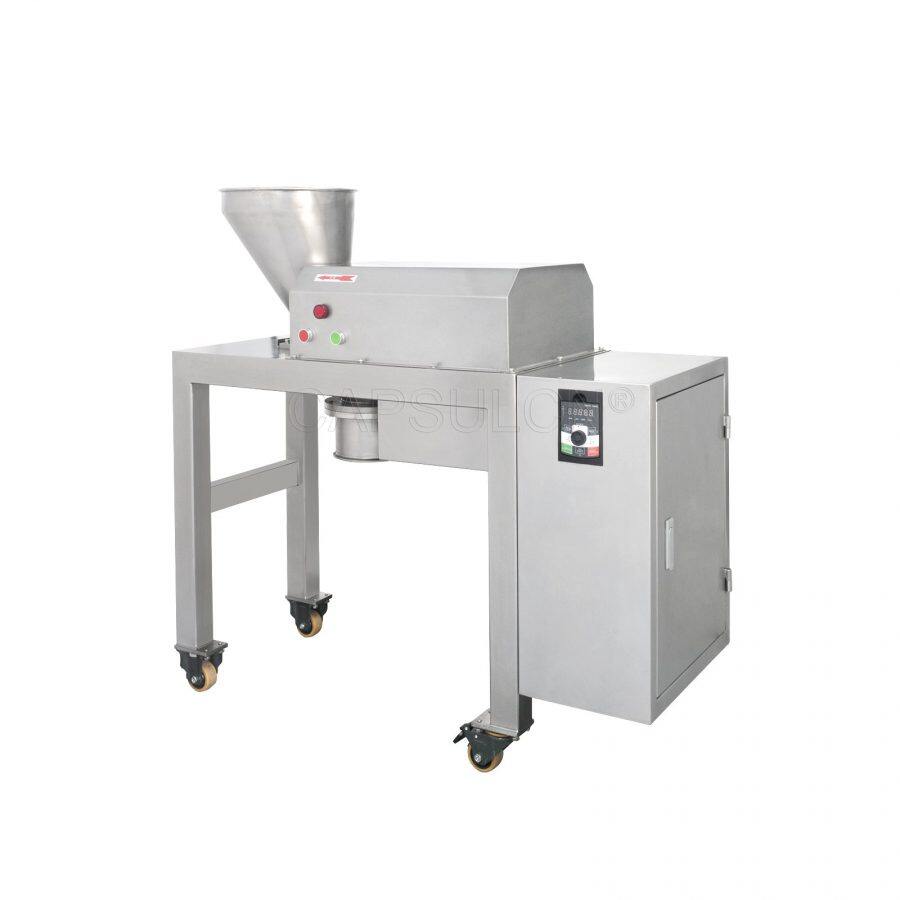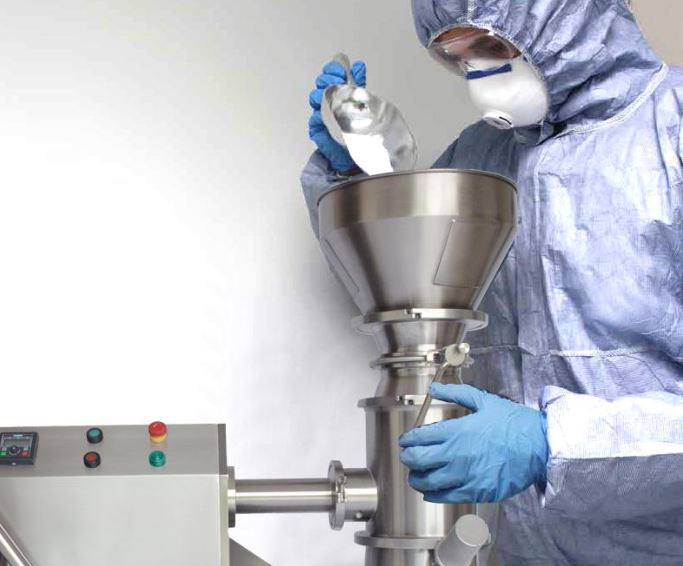What is a Cone Mill?
A cone mill is a machine that gets used in big industries for various purposes, like reducing material size, mixing, sieving, dispersion, and deagglomeration. Cone mill machines are one of the great alternatives to hammer mills and different grinding mills.

Usually, cone mills are available in various sizes. For example, the size ranges from tabletop lab models to massive and high-capacity machines.
Here is some more about the cone mill applications for better understanding!
The major areas where Cone mill machines are used are pharmaceutical, food, chemical, and cosmetics. Check some examples below:
- Recouping the damaged pharmaceutical tablets. It does it by grinding the tablets into powder and helps in their reformation.
- Delumping of the dry detergent while under production.
- Deagglomeration of many dried fruits like cranberries, raisins, and more.
Besides, there are some remarkable benefits of Cone mill in the pharmaceutical industry:
- It provides a better and uniform size of the particles.
- The flexible design helps in managing effective operations.
- Reduced levels of dust, noise, and heat.
- Cone mills have higher working capacity than hammer mills.
Cone Mill Parts
A cone mill machine has different parts. Together all the parts work to provide the desired results to the users. Below are some vital parts of the cone mill pharmaceutical machine:
Hopper
All the unprocessed materials go over the hopper. Some materials are powder, crystals, tablets, and more. The product can be added using hands or a vacuum/gravity feed. Surprisingly, hoppers are also called "infeed chutes" in many machines.
Impeller
An impeller in a cone mill machine can be seen in the milling chamber. Impeller's rotating force pushes unprocessed material through a stationary screen by centrifugal action. The shape of the screen is conical.
Screen
The screen of the cone mill pharmaceutical machine is also called a conical sieve. The material in the granular form passes through this screen. The finer parts of the material get passed through the screen. Other material which is not granulated stays behind for mixing.
Receptacle
Receptacle is the part of the cone mill where the final finished product drops off. On the other hand, it is sometimes attached to other systems like a Vacuum Transfer. Connecting it to other systems means continuing material transfer for other processes.
Drive System
The rotating impeller uses the drive system for power. Different types of drive can be used, including belt drive, direct drive, and gear-box drive. It can be placed on top, under, or anywhere in the cone mill.
Stainless Steel Surface
The surface of the cone mill machine is made of stainless steel material. Besides, the mirror-polished surfaces of the machine have an excellent non-stick and smooth finish.
Cone Mill Working Principle
Now, we are at the core part of this article. We will identify here what is the working principle of the cone mill. So, let's get started!
Generally, the cone mill follows the principle of rubbing force to operate. The force is used by the cone blades and rotates inside a particular cone screen for desired size reduction. Below are the complete steps of the cone mill working principle:
Step 1: The first step involves feeding the unprocessed material to the hopper. It can be done with hands. Otherwise, feeding is also performed using gravity. In this second option, an inverted IBC drum gets interlocked onto the cone mill.
Step 2: When the particles contact the rotating impeller, they get granulated or ground. Then they go to the perforated sieve.
Step 3: The required size of the grains passes through the screen's holes.
Step 4: Increasing the impeller speed can turn the big granules into smaller ones. It can happen because the fast speed can flatten the approaching angle of the particles to the screen's surface.
Step 5: Lastly, the processed particles get collected in a receptacle or to a vacuum transfer which will follow to the next equipment.
Uses Of Cone Mill In Pharmaceutical Industry

- Size Reduction Of Dry Material In Production
Reducing the size of the dry material is a vital function in the pharma industry. It leads to an increase in the surface area of the material.
Besides, it is helpful in the faster solubility of medications. The size reduction is best for both production efficiency and medication strength.
- Granulation
Granulation is a procedure to form grains with the help of powdered material. Instead of powder, solid material can also be used.
Usually, two types of granulations are possible: wet granulation (needs liquid) and dry granulation (doesn't need liquid). After granulation, it either gets packed or mixed with other substances for different capsule fillings or tablet compaction.
- Deagglomeration
A size reduction method performed by a cone mill is called deagglomeration. This process helps break the lumps of powder or crystal that are loosely held.
Deagglomeration is also a crucial process in the pharmaceutical field. It leads to better manufacturing of medications.
- Use Unqualified Tablets & Retrieve The Powder
There might be situations when tablet compression or compaction happens. In such scenarios, the failed tablets do not meet the desired standards.
Here comes the role of the cone mill pharmaceutical machine. It allows the pharma companies to reuse the powders from the failed tablets in other processes.
- Delumping
Shredding of oversized product materials post-production is called delumping. Thus, cone mill machines allow pharmaceutical firms to size their tablets or capsules to a desired standard size.
Conclusion
In the end, we are summarizing the whole article. Cone mill machines are available in a variety of sizes. They can be in the size of tabletop laboratory devices or high-capacity full-scale device size. The machine ensures the uniform reduction of the particle size. Besides, the Cone Mills are available in different designs and produce reduced noise pollution.